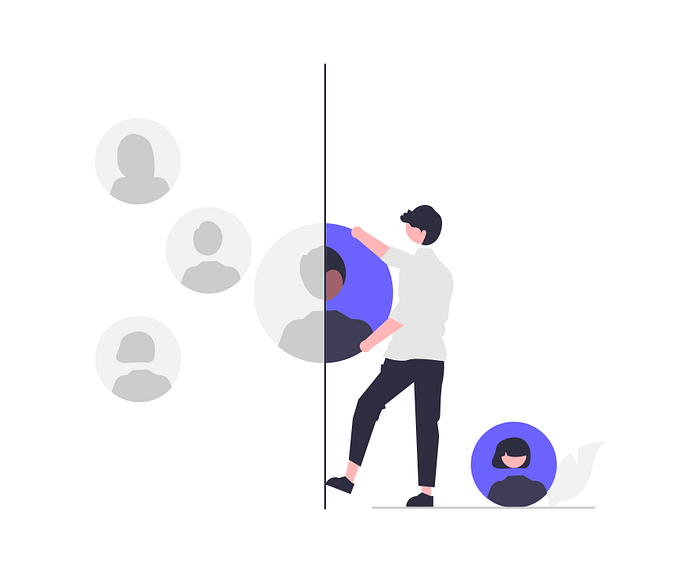Stoicism and Ux Design the Best Mind Hack to Change Your Work by Sergushkin.com Sep, 2023 Ux Planet
Stoicism and UX Design: the best mind-hack to change your work | by Sergushkin.com | Sep, 2023 | UX Planet #
Excerpt #
The modern world offers us many methods to improve our productivity and success. But in our search for effective techniques and tools, we often need to remember that philosophical teachings can be…
[

]( https://sergushkin.medium.com/?source=post_page-----cda77dff6f0e--------------------------------)[

]( https://uxplanet.org/?source=post_page-----cda77dff6f0e--------------------------------)

Source: undraw.co
The modern world offers us many methods to improve our productivity and success. But in our search for effective techniques and tools, we often need to remember that philosophical teachings can be just as practical a tool. Stoicism, for example. Why not apply it to UX design to achieve work-life balance to reduce stress when a project release is approaching or feedback from a client is coming in?
01 What is Stoicism? #
Stoicism is an ancient philosophy that teaches us to control our emotions, focus on what is in our power, and steadfastly accept those situations we cannot change. This can be the key to a more productive and efficient experience in UX design.
02 Communicating with customers #

Source: undraw.co
In the context of UX design, Stoicism finds its application in communicating with clients. It teaches us how to build constructive and empathic relationships, even when encountering difficulties or disagreements.
Stoicism helps us realise that we can’t wholly control customer expectations and reactions, but we can influence the communication process.
The ideal communication process is when information is presented as clearly as possible, and your client fully understands what is required of them for the project or what you want to tell them.
How to improve the effectiveness of communication:
- observe business ethics,
- summarise all agreements at the end of the conversation,
- give only correct and complete information to the client,
- stick to deadlines and agreements,
- use the communication channel preferred by the client,
- record all communications,
- communicate with the client only at a time that is convenient for him,
- stay focused during the conversation.
03 Project work #
When working on a UX project, the principles of Stoicism suggest that we focus on what is impactful. We need to focus on precisely what affects the user experience.
At the same time, Stoicism reminds us of the importance of flexibility and adapting to change.
04 Analysing the user experience #

Source: undraw.co
Stoicism teaches us to analyse the user experience carefully and dispassionately. Here, it is essential to take note of both positive feedback and criticism, using it as a constructive tool to improve the project.
05 Teamwork #

Source: undraw.co
In a teamwork environment, the principles of Stoicism help build healthy and productive relationships with colleagues. The wisdom of Stoics lies in finding a balance between one’s interests and the team’s goals, which helps achieve shared success.
It is also essential to respect diversity of opinion and remember that this helps to find more creative and innovative solutions.
06 Responding to feedback #
Stoicism will teach us to see the value in every positive or negative feedback. We don’t need to take criticism too personally. It is much more effective to use it for our own growth and skill improvement.
07 Accepting successes and failures #

Source: undraw.co
In the work of a UX designer, there are often both successes and failures. Stoicism teaches us to accept both as part of the process. Successes should not inflate our ego, and losses should not lower our self-esteem.
Every experience is a valuable experience. No exceptions.
08 Coping with Stress #
Stoicism offers practical ways to deal with stress. It teaches us to focus on what is in our power to change and accept the rest with wisdom. Regular mindfulness practices can help keep emotions under control.
Here are some mindfulness practices that are suitable for designers:
- Meditation

Source: undraw.co
Regular meditation sessions can help improve focus, relieve stress, and enhance creative thinking. For designers, this is especially important when working on complex projects.
2. Breathing practices
Deep and mindful breathing helps to reduce stress and improve concentration and mental clarity. This is especially helpful when important design decisions need to be made.
3. Conscious Perception
Practising conscious perception helps you notice the most minor details in the world around you. This can serve as inspiration and add originality to designs.
4. Total Immersion
This practice involves total immersion in the activity at hand, being fully present in the process. This helps to stay focused and find the perfect solutions.
09 Harmony with Self #
Stoicism teaches us to find harmony with ourselves. This includes realising our values and goals and accepting ourselves as we are. Being at peace with ourselves promotes more effective and creative work.
What would you like to add? #
Combining Stoicism with UX design creates a solid foundation for a harmonious and productive professional life. Applying the principles of Stoicism in our work helps not only in developing the soft skills of a UX designer but also makes our work more meaningful and satisfying.